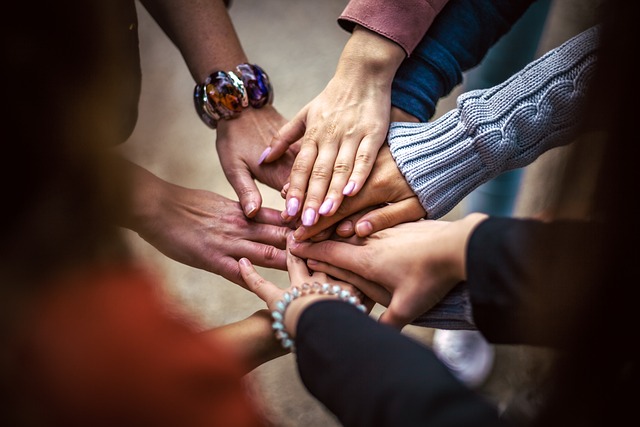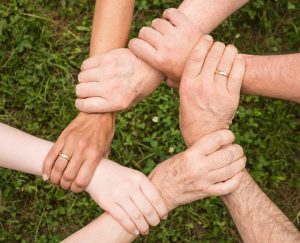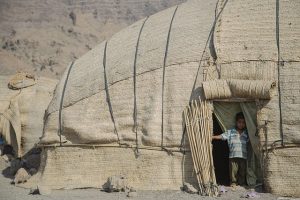
Understanding the Concept of a Community Sports Day
Organizing a community sports day is an exciting venture that brings people together. It fosters a spirit of camaraderie and teamwork, allowing individuals and families to interact, compete, and enjoy activities. Everyone loves sports, right? Whether it’s the thrill of a relay race or the fun of tug-of-war, a community sports day provides a platform for bonding, enhancing social ties, and promoting a healthy lifestyle. With the right approach, this event can become a beloved tradition within your community, captivating participants of all ages and backgrounds.
When we dive deeper into the idea of a community sports day, it’s essential to recognize that the event can encompass a variety of activities. These can range from traditional sports like soccer and basketball to fun games like sack races and three-legged races. Families can participate together, making this not just an event for competitive athletes but also for casual sports enthusiasts. The sheer variety makes it an inclusive experience, encouraging everyone to join in, regardless of skill level. Everyone has something to offer, whether it’s cheering from the sidelines or participating actively in games.
Moreover, hosting a community sports day reinforces community identity. It encourages residents to engage with one another, meet neighbors they might not otherwise see, and share stories and experiences. As families engage in friendly competition, barriers dissolve. Strangers become friends, creating a sense of belonging and unity. With that in mind, it’s pivotal to involve community members from the very beginning, allowing them to contribute their ideas and suggestions. This approach not only generates excitement but also increases participation, as everyone feels a degree of ownership over the event.
Steps to Successfully Organize a Community Sports Day
Getting started is a major milestone in organizing a community sports day. The first step involves gathering a group of enthusiastic volunteers. Sometimes, a successful event starts with just a few dedicated individuals willing to brainstorm ideas and put a plan in motion. This volunteer project can expand significantly, drawing in more community members as word spreads about the plans. Upon gathering your core team, schedule regular meetings to discuss objectives, assign roles, and establish a calendar.
In planning your community sports day, it’s essential to define clear objectives. Ask yourself, “What do we want to achieve?” Is it merely for fun, or do you aim to promote health and wellness? Perhaps you wish to raise funds for local charities or support school athletic programs. Having clear goals will help you determine the type of activities to include, the demographic you’re targeting, and how to promote the event effectively. For instance, if your focus is on family activities, incorporating games that suit all ages will become paramount. Interactive and non-competitive activities like relay races can help energize the day.
Once you have established objectives, it’s time to tackle logistics. Choosing a venue is crucial. Ideally, you’d select a location that is accessible to everyone. Parks, local campuses, or sports complexes often work well, offering ample space and facilities. Once the venue is secured, create a budget that takes into account costs such as venue rental fees, permits, equipment rentals, and refreshments. Fundraising strategies may also be needed to cover expenses. Look into local businesses willing to sponsor, donate prizes, or provide food stalls. Building partnerships helps reduce costs and enhances visibility.
Activities to Include on Community Sports Day
An impressive lineup of activities will keep participants engaged from start to finish. Consider including a mix of traditional sports and fun, quirky games that all ages can enjoy. Classic events like soccer matches, basketball games, or a mini-Olympics can draw in competitors. Incorporating family activities, such as a tug-of-war or egg-and-spoon race, will engage everyone, ensuring laughter and enthusiasm.
Team-building games are particularly beneficial. Organize relay races that require teams to work together. These activities nurture communication and collaboration. You’ll create bonds that extend beyond the event. Offering various skill levels will make it possible for everyone to contribute while feeling included. Additionally, playful activities like a water balloon toss or a scavenger hunt can offer lighter, competitive fun that emphasizes enjoyment over performance.
Don’t forget the importance of breaks. Providing relaxation zones with refreshments allows families to recharge. This way, everyone leaves energized and excited for more fun. It also opens opportunities for informal conversations, helping forge connections within the community. Partnering with local food vendors can enhance this experience, offering delicious options that cater to diverse dietary preferences.
Marketing Your Community Sports Day
Once your community sports day gains momentum, effective marketing becomes vital. It’s all about spreading the word and capturing the interest of residents. Utilize social media platforms as one of your primary marketing tools. Create a dedicated Facebook event page to keep the community informed. Encourage participants to share the event with their friends and family. Digital word-of-mouth can amplify excitement exponentially. You might also consider traditional marketing methods like flyers and posters in local community centers, libraries, and cafes. A well-placed sign-up sheet could capture interest while allowing you to gauge participant numbers.
Involve local schools and organizations in your marketing efforts. Partnerships with schools can help you tap into an audience of children and parents alike. Ask them to announce the event through newsletters or social media. Encourage teachers to mention the sports day to students. The more the event appears in local discussions, the more likely families will consider attending. Also, consider creating thematic hashtags for the event to generate online buzz. Something catchy like #LocalSportsFiesta can encourage participants to post their experiences and photos.
Media coverage could offer significant benefits. Reach out to local newspapers, radio stations, and community blogs. Offer to provide information about your goals, activities, and any community impact you aim to achieve. They may share your event, increasing your reach while promoting community spirit. Enlisting excited sponsors could also lead to increased visibility, as they may have dedicated marketing channels of their own.
Inclusivity and Accessibility
Inclusivity is crucial during the planning of a community sports day. Every member of your community should feel welcome to join, regardless of physical abilities or age. Speak with community members to identify any additional measures to enhance accessibility. This might involve ensuring that all activities can accommodate wheelchairs or physically challenged participants. Thoughtful planning will form a meaningful part of your event’s fabric.
Consider having a variety of stations for different age groups. This arrangement allows families to choose activities. In addition, organizers should ensure that there are adequate resources and assistance for those with unique needs. Offering options like sensory-friendly spaces can make the environment more inviting. Tailoring your planning ensures that everyone experiences joy and engagement during your community sports day.
Sensory considerations become particularly crucial with activities for young kids. Having zones that allow quieter games or crafts can balance the energetic environment, catering to families with varying needs. Be accommodating and welcoming. This approach reflects a community’s strength and commitment to provide enjoyable experiences for everyone.
Evaluating the Success of Your Community Sports Day
Once the sports day wraps up, evaluation becomes essential to gauge success. Gathering feedback from participants offers insights into what was appreciated and what can be improved for future events. Surveys can be an effective tool for this task. You can create simple questionnaires focusing on participants’ experiences, desired activities, and logistical concerns. Encourage honesty; feedback fosters growth. Use digital platforms to offer ease in sharing thoughts, reaching a broader audience.
Additionally, observing the level of engagement during the event provides valuable insights. Were there any activities that consistently drew large crowds? Identifying crowd favorites can help you determine which activities to continue and which to reevaluate. Note participant demographics as well. Understanding who participated can help tailor future events to community needs. Post-event discussions among the organizing team are also vital. Share thoughts about what went well, what was challenging, and what could be revised for next year.
Ultimately, each community sports day serves as both a celebration and a learning opportunity. As you refine your approach based on feedback, you’ll create a legacy activity that becomes even more beloved over time. Celebrations like this shape community identity, inviting unity and holistic wellness in the most delightful ways.
FAQ
- What age group is suitable for a community sports day?
- A community sports day is designed to be inclusive for all ages. Activities can range from toddler-friendly games to more competitive sports for adults, ensuring everyone can enjoy.
- How can I get volunteers for organizing the event?
- You can seek volunteers through local community centers, schools, and social media. A dedicated outreach effort can engage small groups, inspiring them to contribute their time and skills.
- What types of activities should be included?
- Include a variety of sports like soccer, basketball, and fun games such as sack races and tug-of-war. Additionally, consider activities that promote teamwork and provide relaxation spaces.
- How can I ensure the event is accessible for everyone?
- Incorporate feedback from community members regarding accessibility needs. Plan equipment for diverse physical abilities, and ensure that the venue caters to all members.
- What are some marketing strategies to consider?
- Utilize social media platforms, collaborate with local schools and businesses, create flyers, and reach out to the media. Effective marketing attracts participation and keeps excitement high.



